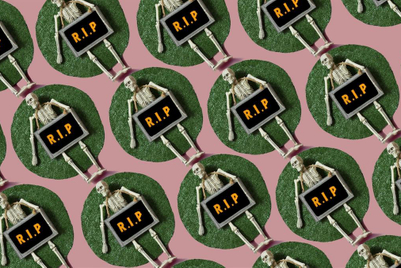
For years I felt that creative briefings were probably the most important meetings we did. The grand passing over of the distillation of the problem and an inventive strategy to deal with it.
Now I'm not so sure.
In fact I'm beginning to think that most important get together is actually the loose, instinctive chat between team members in the taxi back from the client briefing. A very different conversation and one—if you have all the relevant people there—that can be hugely productive.
Why? Simply because baton passing from one discipline to the other no longer serves our business well. That gut feeling you have that you are doing far more work, for the same fees, in less time, than you were even just a few years ago is entirely accurate. Indeed, according to Michael Farmer in 'Madison Avenue Manslaughter' you are actually doing far, far more work, in less time, for the same fees, than you were in the past.
Given this it is clear that we cannot afford not to be fast if we want to stay in business and pay ourselves reasonably well. And the best way to be fast is to get the sharpest brains you have available thinking about the problem ( however loosely defined ) from the get go. Not after two weeks of strategic development. Just as good account and planning people can make useful creative suggestions, so good creative people can contribute to strategy.
There is also another factor involved in this that is less often mentioned, possibly because it implies loss of expertise. Simply that more people know how to do our jobs—creative and strategic—than ever before. Grace Blue's recent talent survey across Australia, China and Singapore, found that 26% of senior marketers from leading brands had come from an agency background. And of course numerous clients now have their own in house creative units of various sorts too.
So the whole process is less of a 'black box' than before simply because so many of the people around the table know exactly how it works. In this scenario revealing your answer like an old school waiter might dramatically lift a cloche to reveal the dish below looks increasingly farcical ( like it does in restaurants now too - and notice how many of the world's best now have open kitchens to let customers see and feel part of the whole process ).
So if it's about starting together discipline wise rather than baton passing how best do you do it ? Simple. You get senior representatives of each discipline (not just the recently promoted account director on their own) to attend every client briefing and then start building together, fast.
You may also want to get the taxi to drive around the block a few times too.
Charles Wigley is Asia chairman at BBH.




.jpg&h=334&w=500&q=100&v=20250320&c=1)





+(900+x+600+px)+(3).png&h=334&w=500&q=100&v=20250320&c=1)
.jpg&h=334&w=500&q=100&v=20250320&c=1)



.jpg&h=268&w=401&q=100&v=20250320&c=1)

.png&h=268&w=401&q=100&v=20250320&c=1)
.jpg&h=268&w=401&q=100&v=20250320&c=1)
.png&h=268&w=401&q=100&v=20250320&c=1)
